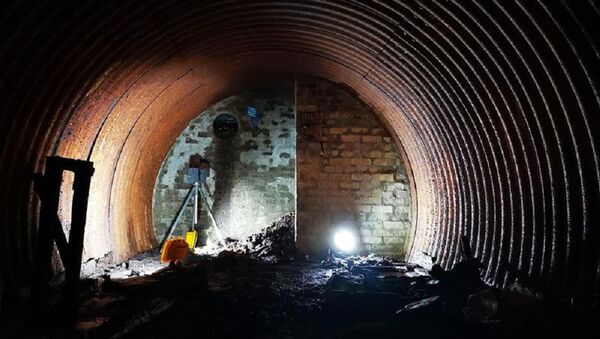The fortified hideout stretches about 23 feet long (7 meters) and is 10 feet wide (3 meters), the Daily Mail reported, citing archaeologists. According to the media report, forestry workers in south Edinburgh uncovered the bunker buried four feet (1,5 meters) underground and consisting primarily of a tin roof and brick walls.
Archaeologists suggested that the bunker could house seven soldiers from the ranks the the so-called 'Churchill secret army' including bunk beds, a table and a cooking stove.
"This discovery gives us an insight into one of the most secretive units that were operating during WW2. It's quite rare to find these bunkers as their locations were always kept secret - most were buried or lost. From records, we know that around seven men used this bunker and at the time were armed with revolvers, Sten guns, submachine guns, a sniper's rifle and explosives", Forestry and Land Scotland (FLS) archaeologist Matt Ritchie said, cited by The Daily Mail.
'Churchill's secret army', also known as the 'Scallywags', was reportedly trained in guerilla warfare and had a special order to fight to the death in the event of a Nazi invasion. In case of enemy invasion, the orders for the Auxiliary Unit volunteers were to disappear without telling anyone and to report to hidden bases in the countryside, the media report said.
The Daily Mail said that each volunteer was issued with sealed orders giving a list of potential Nazi collaborators, some as senior as county chief constables, who might have to be executed if there was a risk of them helping the enemy. Most of the volunteers reportedly worked in the countryside and were chosen for their knowledge of the local area and their ability and willingness to use weapons.
Hundreds of such bunkers were reportedly built across Europe for these types of soldiers, but the discovery in the woods of Scotland was not recorded, The Daily Mail said.
The bunkers were originally simple primitive dens in the ground dug by 'Churchill's secret soldiers'. At the start of 1941, British engineers reportedly upgraded many of the clandestine bases with wood, concrete and iron.



